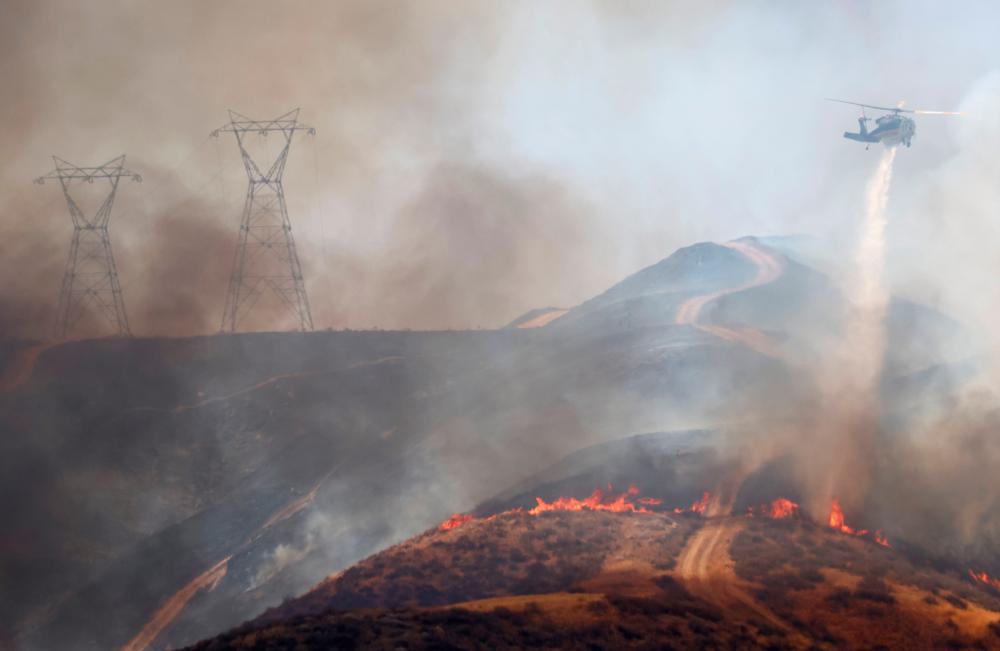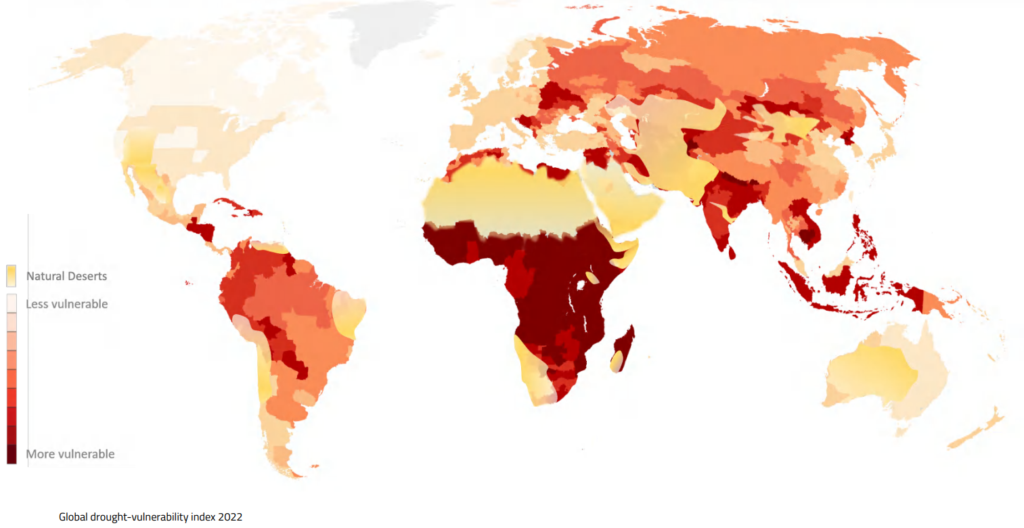
Published in The Malaysian Insight and theSundaily, image by theSundaily.
Transboundary haze affecting Malaysia has been an ongoing problem for decades and mainly caused by forest fires due to agricultural techniques known as “slash-and-burn” from across the border (whether land, i.e., Kalimantan or cross-straits, e.g., Riau).
This is because the root cause is burning of peat lands for cultivation which takes place especially during the drought season. This is when peat soil becomes flammable and thus fire can spread easily. For smallholders and individual farmers, the burning activities are mainly for food crops.
If the burning is for commodity crops (i.e., oil palm), then most likely it would be the companies or “big players” that are involved. “Slash-and-burn” is utilised as being the cheapest or low-cost practice. Much of the burning, therefore, stems from areas which have high concentrations of peat in the soil.
Haze has caused a damaging impact on public health and the economy of the affected countries.
According to a journal article entitled, “Acute Health Impacts of the Southeast Asian Transboundary Haze Problem – A Review” (International Journal of Environmental Research and Public Health, 2019), existing studies conducted in countries affected by transboundary haze “indicate consistent links between haze exposure and acute psychological, respiratory, cardiovascular, and neurological morbidity and mortality”.
Haze – or as some would insist to call it as “smog” – mainly contains carbon monoxide and particulate matter (especially polycyclic aromatic hydrocarbon/ PAH). The former can be a respiratory irritant and like the latter are (highly potentially) carcinogenic (i.e., cancer causing) and thus pose a health hazard/ risk to the general public.
At least between 40,000 to 100,000 additional deaths in Indonesia, Malaysia and Singapore have been due to the adverse health impact of haze (see “Air quality and health impacts of vegetation and peat fires in Equatorial Asia during 2004–2015”, Environmental Research Letters, 2020).
Furthermore, according to the World Health Organization (WHO) Director of Public Health and Environment Dr Maria Neira, “[l]ong-term exposure to air pollution will affect [the] immune system and therefore will make [one] more susceptible to any type of respiratory diseases … [including especially Covid-19]”.
On the economic front, the World Bank has said that Indonesia lost at least USD16.1 billion due to fires in 2015, which is more than double the cost of rebuilding after the Aceh tsunami (see “The Cost of Fire: An Economic Analysis of Indonesia’s 2015 Fire Crisis”, World Bank Group, 2016). As for Singapore, the haze in 2015 cost the island republic SGD1.83 billion (see “What the 2015 haze cost Singapore: $1.83 billion” The Straits Times, September 17, 2019).
For 2019, the World Bank estimated that it cost Indonesia more than USD5.2 billion. The evaluations were done from June to October 2019. However, the fires continued to occur until November (see, e.g., “World Bank says Indonesia forest fires cost $5.2 billion in economic losses”, Reuters, December 11, 2019). Therefore, the actual cost may be higher.
Due to the La Niña climatic conditions that increased rainfall, Indonesia experienced a low number of fire alerts in 2021 where “only 364 high-confidence fire alerts were recorded by NASA’s Fire Information for Resource Management System (FIRMS) in September … at the peak of the dry season, compared to the 427 and 8,698 hotspots recorded by satellites for the same months in 2020 and 2019 respectively” (see “Haze Outlook 2022”, Singapore Institute of International Affairs (SIIA), June 2022).
The same trend is expected to occur in 2022 as SIIA estimates that the risks of haze in 2022 would be amber (on a scale of green, amber, and red).
Dr Helena Varkkey, an Associate Professor of Environmental Politics with the Department of International and Strategic Studies at Universiti Malaya, has also re-ignited a warning for the country and affected neighbours to brace for the return haze (“Borderless haze threatens Southeast Asia”, Eco-Business, August 10, 2022).
The estimation is based on three factors.
Firstly, the Southeast Asia region has experienced rainfall that is above average due to the La Niña events. The La Niña events are predicted to continue from September to November period (see “Seasonal Forecast for September – November 2022”, Asean Specialised Meteorological Centre/ASMC, September 1, 2022).
Secondly, the rise of palm oil prices in 2022 and the increase in the amount of oil palm seeds bought by oil palm growers in 2021 suggested that oil palm planting will surge. Due to this trend, the possibility of haze will increase if fire is used to open up new land for planting or replanting.
Thirdly, the Indonesian government has enforced policies that lower the risk of forest fires. For example, in August 2019, the Indonesian government established a permanent moratorium on any further forest clearance permits in primary forest and peatland areas to prevent these areas from being logged or turned into plantations.
Additionally, the central and provincial governments have strengthened fire prevention and suppression efforts over the past three years.
Despite these efforts to lower the risks of forest fire, there is a continuing need for an increase in forest monitoring, as well as action against the illegal use of fire by companies whose primary goal is to maximise profit.
Furthermore, even though there has been no transboundary haze lately, Indonesians still suffer from localised haze (see, e.g., “As Jakarta chokes on toxic air, Indonesian government stalls on taking action”, Mongabay, June 29, 2022).
As the dry season begins to take hold in Indonesia, the province of Riau is seeing an increase in forest fires. Since the beginning of this year, more than 1,000 hectares (2,500 acres) of land have been consumed by fire (see “In Indonesia’s forest fire capital, the dry season brings yet more burning”, Mongabay, August 5, 2022).

Source: Drought in Numbers 2022, United Nations Convention to Combat Desertification (UNCCD)
According to the map above, Indonesia is one of the countries most vulnerable to drought in 2022. What is more worrying is that the United Nations (UN) estimated that by 2050, 75% of the world might experience drought.
Last year alone, Indonesia’s Meteorology, Climatology, and Geophysical Agency reported that 85% of Indonesia was affected by drought (see “Building resilience in Indonesia’s drought-ridden island of Java”, The Jakarta Post, June 21, 2022).
Clearly, we cannot rely only on weather conditions amid climate change to manage transboundary haze.
As it is, transboundary haze is a complex issue requiring concerted and sustained regional cooperation.
The only legally binding regional agreement – the Asean Agreement on Transboundary Haze Pollution/AATHP (2002) – had been hampered by Indonesia’s delayed ratification, lack of clarity over the functions of the ASMC, and uncoordinated assistance efforts (see “Borderless Haze Threatens Southeast Asia”, Tempo.co, August 13, 2022).
It specifically establishes, among other things, the Asean Coordinating Centre for Transboundary Haze Pollution “to facilitate cooperation and coordination … in managing the impact of land and/or forest fires in particular haze pollution …”.
Prior to that, the Regional Haze Action Plan/RHAP (1997) had apportioned roles – consistent with the broader principle of non-interference – that Malaysia would take the lead in prevention, Indonesia in mitigation, and Singapore in the monitoring of fires and haze affecting the three countries (see “Can a Regional Public Health Emergency Centre Work for Asean?” by Melinda Martinus, Fulcrum, May 27, 2022).
EMIR Research would like to recommend several policy recommendations to manage the Southeast Asia transboundary haze issue.
Currently, the ASMC is hosted by the Meteorological Service Singapore. It provides weather and haze outlook, satellite images, hotspot information, air quality information, and fire danger rating.
Another regional haze centre is critically needed for the Borneo region to serve as a monitoring centre – in order to “close” the geographical and topographical distance in real-time and granular terms. The deployment of drones to survey and provide surveillance of the historic and potential areas for forest fire should be intensified.
Such a centre would utilise global positioning satellite (GPS) and geographic information system (GIS) as part of an early warning system (EWS) to indicate potential hotspots so that preventative and early remedial measures can be taken.
The software and database of the ASMC should be inter-faced/inter-linked with individual smart apps deployed in the private sector such as ArcGIS by Asia Pulp and Paper (APP) Sinar Mas (which in turn is integrated with real-time data from Esri’s Living Atlas of the World database), e.g., by converting the original coordinates into the current geometries (and by extension, attribute views), specific software domain codes, customised mapping and incremental area-spotting data.
With financial backing from the Asian Development Bank (ADB), Asean should expedite the ToFEWSI (Towards a Fire Early Warning System for Indonesia) project – which aims to construct a suite of climate-, hydrological- and agent-based modelling systems at landscape to regional-scales to be used as a new forecasting tool.
Next, for prevention as well as mitigation efforts, installation of tube wells to pump groundwater or aquifer water into already-existing trenches, ditches, moats, and canals built by the plantation companies should be part of the standard practices.
This is for the pumping of ground-water or aquifer water which exist below peat soil and peat swamps.
Two companies in Kalimantan had successfully tapped underground water in Kalimantan in 2015. The (unconfined) aquifer water was situated at 9-10 metres below surface. The cost for the tube-wells was then only USD350.00 per piece, and hence a very cost-effective method for the plantation companies. The watered artificially-created grooves then would act as a fire barrier or breaker, thus preventing the fire from spreading.
As part of the regulatory and legal framework, the practice should be made compulsory under a new piece of legislation in Indonesia and Malaysia (for our companies operating across the border in Kalimantan and for those with plantations in Sumatera and the Riau islands), e.g., under a revived Cross-Border Pollution Act that was abandoned by the then administration formed from the Sheraton Move.
Jason Loh and Anis Salwana Abdul Malik are part of the research team of EMIR Research, an independent think tank focused on strategic policy recommendations based on rigorous research.

